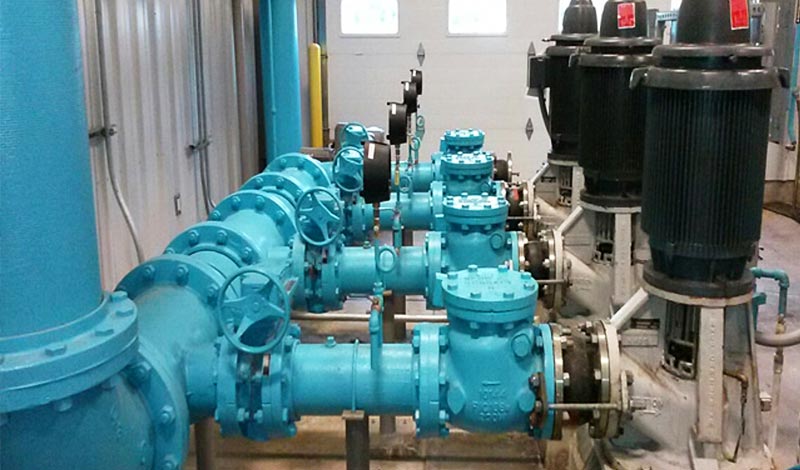About 80% of the energy used in water treatment and distribution is used to pump water, according to the Water Research Foundation. Thus, pumps offer a prime opportunity for savings. Here are three of the most effective ways to reduce your energy consumption.
1. Install variable speed drives
Variable speed drives (VSDs) can reduce pump energy use by as much as 50%, as well as increase the service life of motors. VSDs match motor speed to pump requirements by varying the motor’s frequency and voltage.
VSDs are considered the most efficient and cost-effective way to control a three-phase induction motor. For motors running a 50% load for example, a VSD will reduce energy use by about 75%. VSDs are ideal for oversized pumps or when a throttling valve or return loop is used in pump operations. Payback can be as little as six months.
A VSD system was installed on two previously rarely used 800-horsepower pumps at the new water treatment plant in Mooresville, North Carolina. This allowed the new 800-hp pumps to be up and running without affecting the operation or efficiency of the old plant. Now both treatment plants can efficiently handle increased capacity and provide redundancy.
2. Upgrade to more efficient pumps
High-efficiency pumps can lower both energy consumption and maintenance costs.
At the Harleyville, South Carolina, treatment plant, lift stations were encountering frequent clogging, causing expensive maintenance and repair, as well as skyrocketing utility bills as a result of extended pump run times. Pumps were unable to keep up with demand, causing equipment failure and station backup.
Three lift stations were retrofitted with self-cleaning, energy-efficient pumps, reducing energy use by 35% and cutting $25,000 in annual maintenance and repair expenditures. Station run time also dropped by roughly 80%. Since 2011, the new pumps have been operating maintenance-free without a single incident of clogging.
Efficient pumps with intelligent controls can provide an additional 25% in energy savings. To select the most efficient units, it’s important to know the rates of flow and pressure in the pumping system. Updating control valves is also critical since they regulate the flow of materials. Although valves equipped with sensors monitoring flow rate, internal pressure and fluid level typically cost more, they can save more money in the long run.
3. Conduct a system energy audit
A pump system audit will identify energy-saving strategies, including those already described. The audit will find symptoms of inefficient pump system operations, including badly worn pumps and noisy pumps or valves. A pump audit will also answer such questions as:
- Do you have the right valves and controls?
- What condition are the pumps in?
- Are the pumps costing you more than they should?
- Has your entire system been tested as well as the pump?
A large amount of data is collected during a relatively short and well-defined period, including: age and efficiency of pumps, flow and energy consumption, pressure and temperature, as well as pump and motor speeds and operating hours.
See Pump Systems from the U.S. Department of Energy for more tools and resources to help you improve system performance and efficiency.
